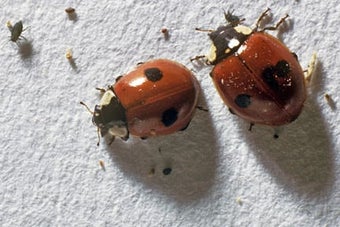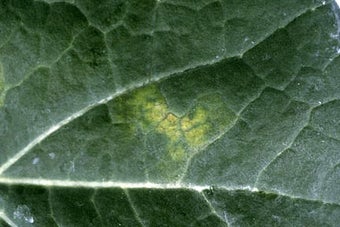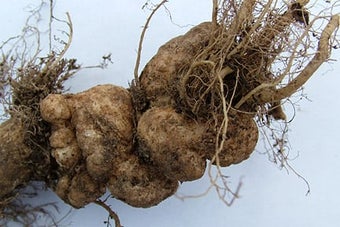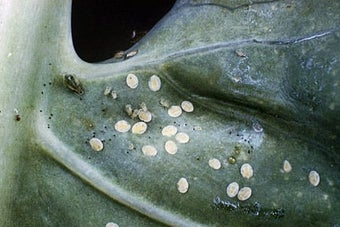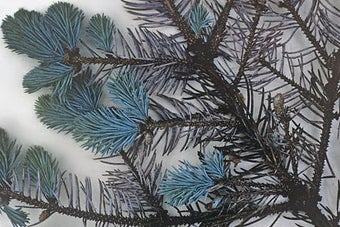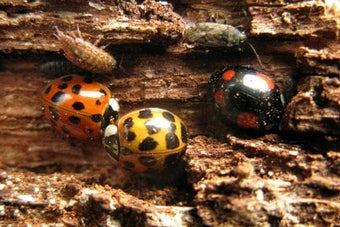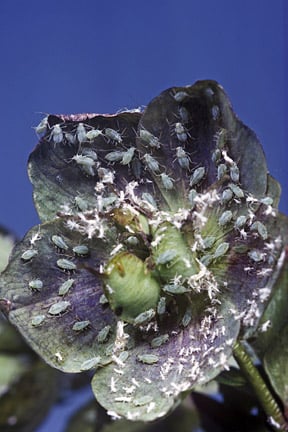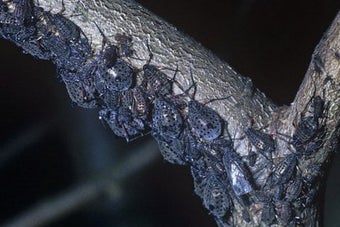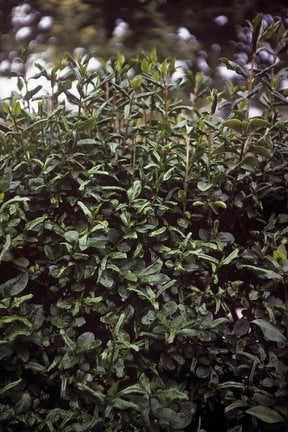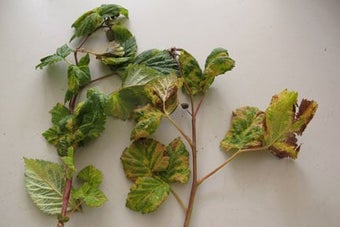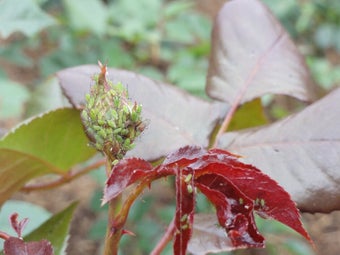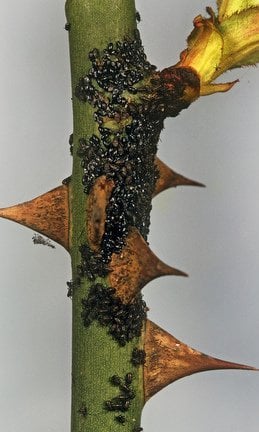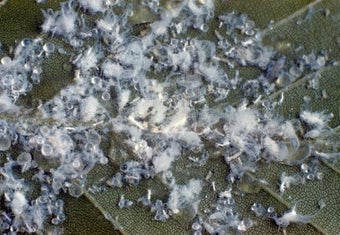
Quick facts
Common name - Mealy cabbage aphid
Scientific name - Brevicoryne brassicae
Plants affected - Cabbage, cauliflower, Brussels sprout, swede and other brassicas
Main symptoms - Greyish white aphids cluster underneath the leaves and on growing points. Leaves distorted and discoloured on young plants
Caused by - A sap-sucking insect
Timing - April-October
What is mealy cabbage aphid?
Aphids are -sucking true bugs. They range in size from 1 to 7 mm (¼ in or less) long. Some aphids are known as greenfly or blackfly, but there are species that are yellow, pink, white or mottled. There are more than 500 aphid species in Britain. Some feed on only one or two plant species, but others can be found on a wide range of plant hosts. Many have lifecycles that involve more than one host plant. Almost any plant can be a host to aphids, including ornamentals, vegetables, fruits, greenhouse plants and houseplants. More information on aphids.
Mealy cabbage aphid is a greenfly with distinct whitish or 'mealy' appearance. This species is only found on cabbages and other brassicas.
Symptoms
On first appearances this insect may be confused with cabbage whitefly. However, mealy cabbage aphid does not fly up in a white cloud when disturbed. Other symptoms to look out for include:
- Dense colonies of greyish-white aphids, up to 2.5 mm long, clustered on the underside of leaves and on the growing points
- The leaves develop a whitish-yellow discolouration where the aphids are feeding
- On young plants, the foliage develops in a distorted manner and the growing point may be killed
- In addition to edible and ornamental brassicas, this aphid can also be found on some related wild plants, such as charlock and shepherd’s purse
- On most brassicas these insects can be tolerated and are a food source for many aphid predators, which can wipe out aphid colonies. On kale and young plants palatability and growth can however be affected
Management
Aphids form the basis of many food chains and it is not unusual to have some of these animals in a healthy balanced garden ecosystem. On older these aphids can usually be considered part of the they support as they are a food source for many other invertebrates, natural enemies will normally reduce numbers during summer.
- Where possible tolerate populations of aphids
- Check brassicas frequently from spring onwards so action can be taken before a damaging population has developed, especially on more vulnerable young plants and kale
- Use finger and thumb to squash aphid colonies where practical
- Encourage aphid predators in the garden, such as ladybirds, ground beetles, hoverflies, parasitoid wasps and earwigs. Be aware that in spring aphid populations often build up before natural enemies are active in sufficient numbers and then give good control
- Dispose of old brassica plants once they have finished cropping to reduce the risk of the next season’s plants becoming affected
Biology
Mealy cabbage aphid overwinters on its host plants as eggs that are laid on stems in late autumn, although in mild winters aphids can be active throughout winter.
For most of spring and summer, the aphids are present as wingless females that give birth to live young.
Winged forms develop when plants have very large populations, allowing the aphids to migrate to new host plants.

